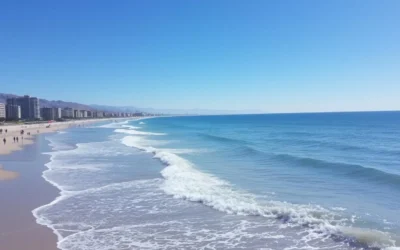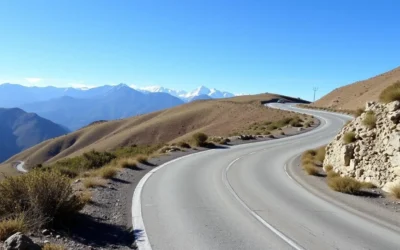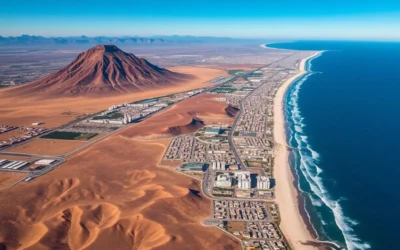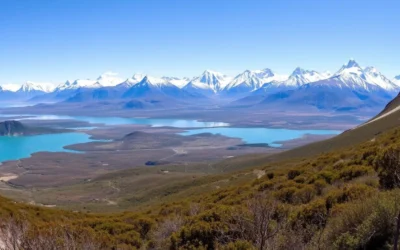Home to one of the last remaining rising mountain ranges on Earth, Torres del Paine National Park sees its iconic granite peaks grow approximately 1 cm taller each year due to ongoing tectonic forces. This geological marvel is just one of countless wonders awaiting visitors to this pristine Patagonian wilderness that draws over 300,000 adventurers annually to its turquoise lakes, massive glaciers, and windswept plains.
Whether you’re planning to tackle the famous W Trek, hoping to spot elusive pumas in their natural habitat, or simply yearning to witness some of the most dramatic landscapes on the planet, this comprehensive guide will help you navigate the logistics, activities, and practical details for an unforgettable journey to Chile’s crown jewel national park.
The iconic granite towers of Torres del Paine National Park rise dramatically above a turquoise alpine lake
Getting There & Planning Your Journey
Torres del Paine National Park lies in the far south of Chile, in the Magallanes region of Patagonia. While its remote location requires some planning, the journey is well worth the effort.
Flying to Patagonia
Most international travelers begin their journey by flying to Santiago, Chile’s capital, before connecting to either:
- Punta Arenas (PUQ) – The region’s main airport with more frequent flights
- Puerto Natales (PNT) – Seasonal airport (Oct-Apr) located just 72 km from the park
Flights from Santiago to Patagonia typically range from $150-300 USD depending on the season. LATAM and Sky Airline offer the most frequent service.
Ready to Book Your Flight to Patagonia?
Compare prices and find the best deals on flights to Punta Arenas or Puerto Natales.
From Punta Arenas to Puerto Natales
If flying into Punta Arenas, you’ll need to travel to Puerto Natales, the gateway town to Torres del Paine. Options include:
By Bus
Regular buses run between Punta Arenas and Puerto Natales, taking approximately 3 hours and costing around $10-15 USD. Bus companies like Bus Sur and Buses Fernández operate multiple daily departures.
By Rental Car
Renting a car gives you maximum flexibility for exploring both the park and surrounding areas. The drive from Punta Arenas to Puerto Natales takes about 2.5 hours along well-maintained roads.
From Puerto Natales to Torres del Paine
Puerto Natales is located 72 km from the park entrance. You have several options to reach the park:
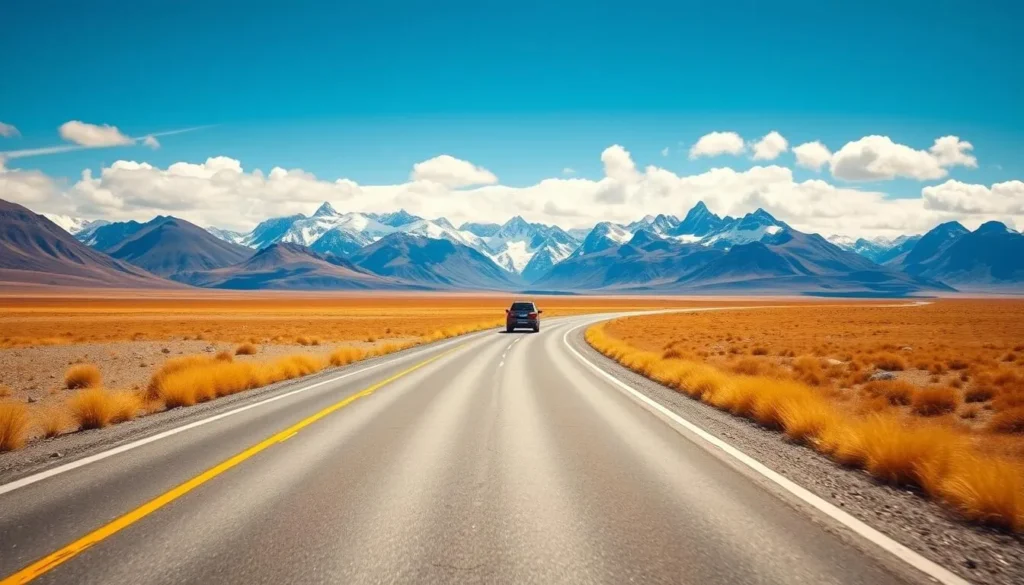
The scenic drive from Puerto Natales to Torres del Paine National Park
Public Bus
Bus companies operate twice-daily services to the park (morning and afternoon) for approximately $15 USD round-trip. These buses stop at the main entrances and some key points within the park.
Rental Car
Having your own vehicle provides the freedom to explore at your own pace. The drive takes about 1.5 hours on mostly paved roads with some gravel sections.
Organized Tour
Many companies offer day trips or multi-day tours from Puerto Natales, which include transportation and guided activities within the park.
Explore Torres del Paine at Your Own Pace
Rent a car to discover hidden viewpoints and maximize your time in the park.
Park Entrance Fees
All visitors must pay an entrance fee to access Torres del Paine National Park:
- High season (October-April): 35 USD for adults (up to 3 days) or 49 USD (more than 3 days)
- Low season (May-September): 18 USD for adults
Important: You must book your entrance ticket before arriving at the park using the official CONAF website. Download your QR code while in Puerto Natales as there is limited internet connectivity in the park.
Best Time to Visit & Weather Tips
Torres del Paine experiences four distinct seasons, each offering a unique perspective on the park’s magnificent landscapes.
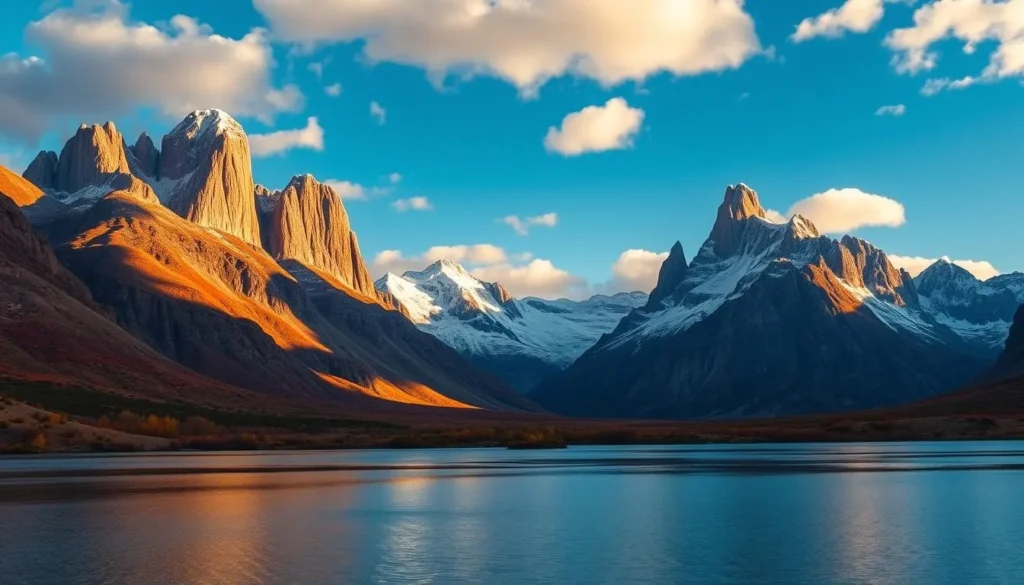
Autumn brings spectacular golden colors to Torres del Paine’s landscapes
| Season | Months | Temperature | Conditions | Crowds | Recommendation |
| Summer | Dec-Feb | 8-20°C (46-68°F) | Longest daylight, strongest winds | Very high | Book 3+ months in advance |
| Autumn | Mar-May | 3-13°C (37-55°F) | Beautiful fall colors, less wind | Moderate | Great for photography |
| Winter | Jun-Aug | -3-8°C (27-46°F) | Snow, shorter days, limited services | Very low | Guide required |
| Spring | Sep-Nov | 3-16°C (37-60°F) | Wildflowers, variable weather | Low to moderate | Good balance of weather and crowds |
Weather Considerations
Patagonian weather is notoriously unpredictable. The local saying that you can experience “four seasons in one day” is absolutely true in Torres del Paine. Key weather factors to consider:
Wind
The park is famous for its strong winds, particularly in summer when gusts can exceed 100 km/h. Wind-resistant clothing is essential year-round.
Precipitation
Rain can occur any time of year, though winter tends to be drier. Always pack waterproof gear regardless of when you visit.
Pro Tip: The shoulder seasons (October-November and March-April) often provide the best balance of decent weather, moderate temperatures, fewer crowds, and lower prices. If you’re flexible with your travel dates, these periods are highly recommended.
Getting Around Locally
Once inside Torres del Paine National Park, you have several options for exploring its vast landscapes and iconic attractions.
By Private Vehicle
Having your own car or rental vehicle provides maximum flexibility to explore the park at your own pace. The main road through Torres del Paine is a loop that connects most major viewpoints and trailheads. While some sections are unpaved, they’re generally well-maintained and accessible to standard vehicles.
Important: There are no gas stations inside the park. Fill up in Puerto Natales before entering, and consider bringing a spare gas can for longer stays.

Hikers on the famous W Trek trail with the iconic peaks in the background
By Shuttle Bus
If you’re hiking the W Trek or other multi-day routes, shuttle buses operate between key points within the park:
- Pudeto – Paine Grande (catamaran ferry across Lake Pehoé)
- Laguna Amarga – Las Torres area
- Central – Serrano entrance
These shuttles run on fixed schedules and can get crowded during high season, so plan accordingly.
By Foot
Many of Torres del Paine’s most spectacular sights are accessible only by hiking trails. The park features an extensive network of well-marked paths ranging from easy day hikes to challenging multi-day treks.
Explore Torres del Paine with Expert Guides
Join guided hiking tours, wildlife excursions, and boat trips to experience the best of the park.
By Boat
Several boat services operate within the park:
- Catamaran across Lake Pehoé (connecting Pudeto with Paine Grande)
- Grey Lake navigation to Grey Glacier
- Serrano River boat trips
These boat services not only provide transportation but also offer unique perspectives of the park’s landscapes.
Where to Stay
Accommodation options in and around Torres del Paine range from luxury hotels to basic camping, catering to all budgets and comfort levels.
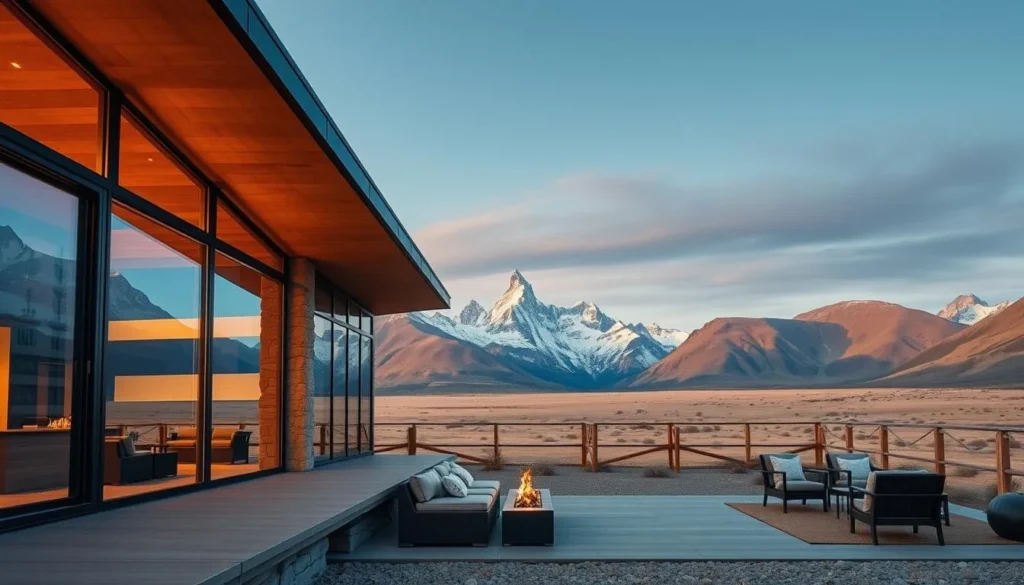
Luxury eco-lodges offer stunning views and comfortable accommodations within the park
Inside the Park
Luxury Hotels
Several world-class hotels operate within park boundaries, offering all-inclusive packages with guided excursions, gourmet dining, and spectacular views. Options include Explora Patagonia, Tierra Patagonia, and Hotel Las Torres.
Price range: $600-1,500 USD per night
Refugios
These mountain lodges are strategically located along the W and O Circuit trails. They offer dormitory-style accommodations, hot showers, and meal services. Popular refugios include Paine Grande, Grey, Chileno, and Los Cuernos.
Price range: $70-120 USD per night
Camping
Campgrounds are available throughout the park, both along trekking routes and near major attractions. Some offer full facilities (showers, cooking areas), while others are more basic. Reservations are essential during high season.
Price range: $10-30 USD per night
Find Your Perfect Stay in Torres del Paine
From luxury lodges to cozy refugios, book accommodations that match your adventure style.
Outside the Park
Staying in Puerto Natales offers more affordable options and is ideal for day trips to the park:
Hotels & Hostels
Puerto Natales has accommodations for every budget, from backpacker hostels to boutique hotels. Many cater specifically to Torres del Paine visitors with early breakfasts, packed lunch services, and equipment rental.
Price range: $20-200 USD per night
Estancias
Traditional Patagonian sheep ranches (estancias) offer unique accommodation experiences in the countryside surrounding the park. Many have been converted into comfortable lodgings while maintaining their authentic character.
Price range: $100-300 USD per night
Booking Tip: Accommodations inside the park, especially refugios along the W Trek, book out months in advance during high season (December-February). Make reservations at least 6 months ahead for peak season visits.
Dining & Local Cuisine
Patagonian cuisine reflects the region’s rugged landscape and cultural heritage, with an emphasis on hearty, warming dishes perfect for refueling after a day of adventure.
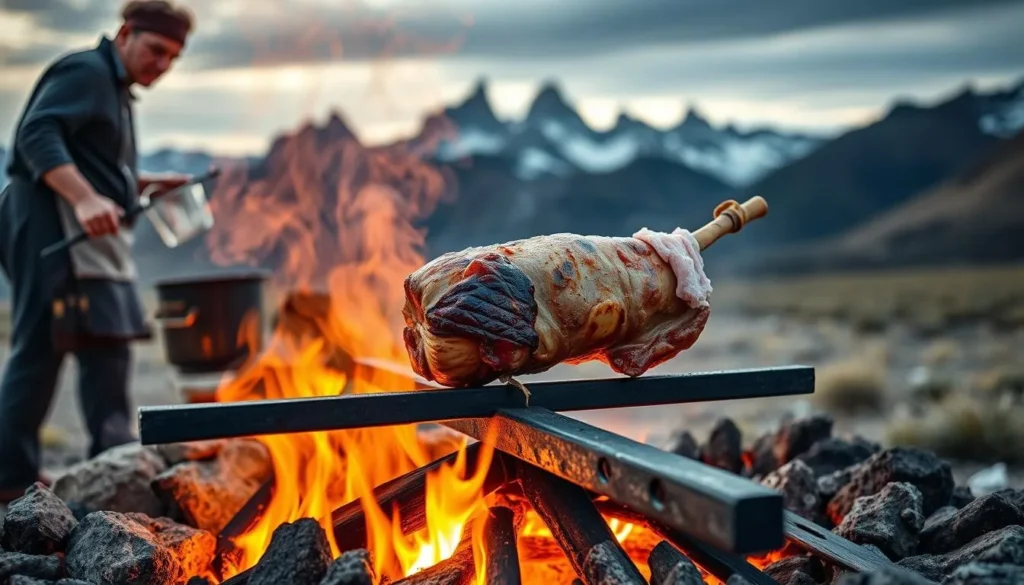
Traditional Patagonian asado (barbecue) is a must-try culinary experience
Local Specialties
- Cordero al Palo – Whole lamb slow-roasted on an iron cross over an open fire, a Patagonian specialty
- Centolla – King crab from the Magellan Strait, typically served in stews or with simple garlic butter
- Calafate Berry – Local berry used in desserts, jams, and liqueurs (legend says eating it ensures your return to Patagonia)
- Mate – Traditional South American herbal tea, commonly shared among friends and trekkers
Dining Options
In the Park
Dining options within Torres del Paine are limited to hotel restaurants, refugio meal services, and a few small cafeterias at visitor centers. Hotel restaurants offer high-quality meals but at premium prices. Refugios provide hearty, simple meals with advance booking required.
Puerto Natales
The gateway town offers a surprising variety of excellent restaurants, from traditional Chilean eateries to international cuisine. Many restaurants cater to hikers with early dinner service and packed lunch options. Prices are significantly lower than in the park.
Self-Catering
Many visitors opt to prepare their own meals, especially when camping or staying in accommodations with kitchen facilities. Puerto Natales has several supermarkets where you can stock up on supplies before entering the park.
Food Tip: If you’re hiking the W Trek or O Circuit, consider pre-booking full board at refugios to avoid carrying heavy food supplies. Alternatively, dehydrated meals are a lightweight option for multi-day treks.
Attractions, Sightseeing & Activities
Torres del Paine offers an incredible array of natural attractions and activities that showcase the park’s diverse landscapes and ecosystems.
Iconic Landmarks
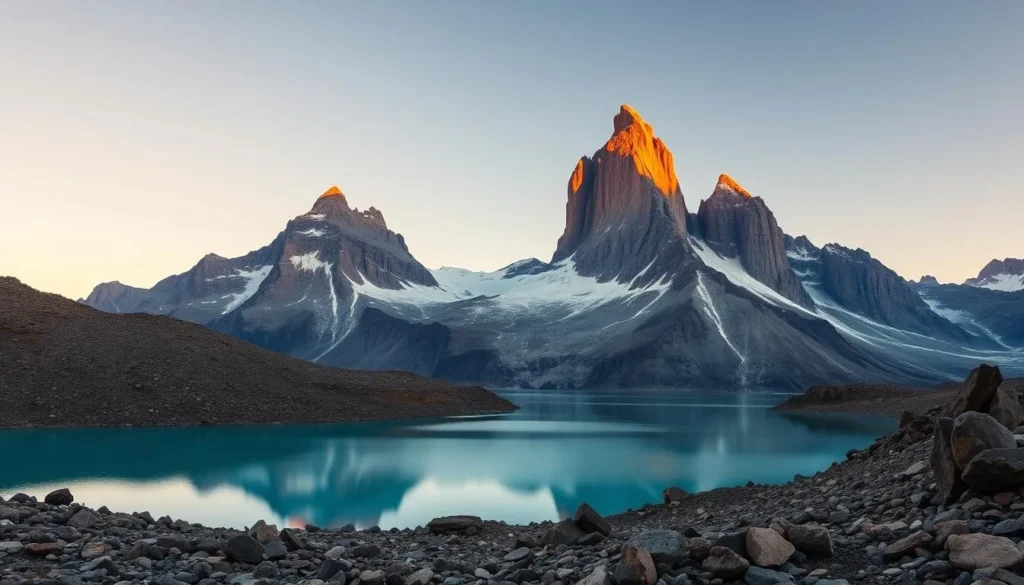
The three granite towers (Las Torres) glowing at sunrise – the park’s most iconic view
Las Torres (The Towers)
The park’s namesake granite spires soar dramatically above a glacial lake. The viewpoint is reached via a challenging but rewarding 18km round-trip hike from Hotel Las Torres. For photographers, sunrise casts the towers in a magical orange glow.
Los Cuernos (The Horns)
These distinctive peaks with their black sedimentary tops and granite bases create one of the park’s most recognizable silhouettes. Several viewpoints along the park road and W Trek offer excellent vistas of these geological marvels.
Grey Glacier
This massive ice field stretches from the Southern Patagonian Ice Field. View it from Mirador Grey on the W Trek, or get closer with a boat tour on Grey Lake that navigates among icebergs calved from the glacier’s face.
Must-See Viewpoints
- Mirador Condor – Panoramic views of Lake Pehoé and the Paine Massif from an elevated position
- Mirador Cuernos – Classic view of Los Cuernos reflected in Lake Nordenskjöld
- Salto Grande – Powerful waterfall with the Paine Massif as backdrop
- Laguna Azul – Tranquil blue lake offering distant views of the towers with minimal hiking required
Experience Torres del Paine’s Highlights
Join guided excursions to the park’s most spectacular viewpoints and landmarks.
Lakes and Waterfalls
The park features numerous stunning lakes and waterfalls, each with its own character:
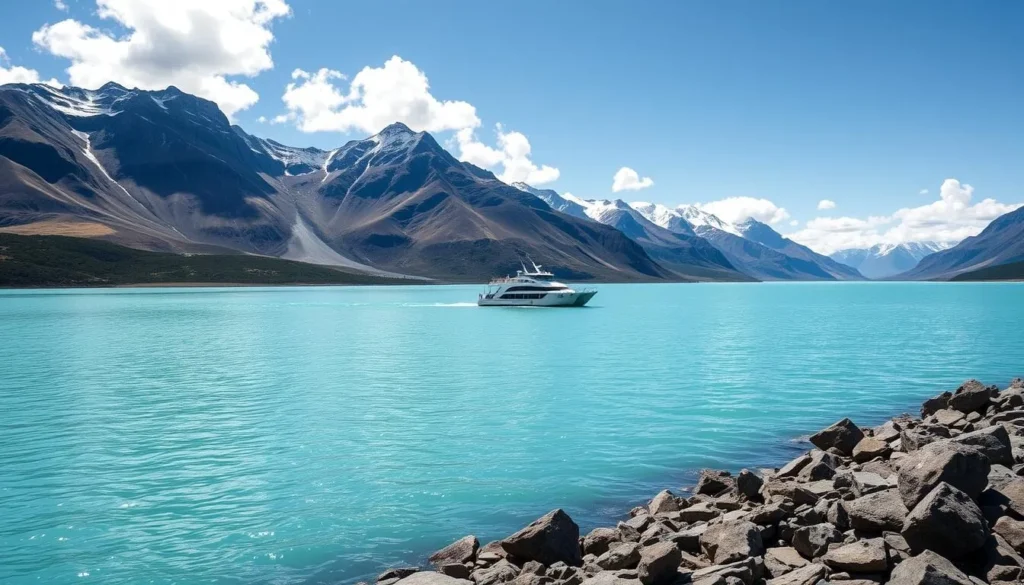
The striking turquoise waters of Lake Pehoé with Los Cuernos in the background
Lakes
- Lake Pehoé – Famous for its turquoise waters and spectacular mountain backdrop
- Lake Grey – Dotted with blue icebergs from Grey Glacier
- Lake Nordenskjöld – Long, narrow lake at the base of the Paine Massif
- Lake Sarmiento – Known for unusual calcium formations along its shores
Waterfalls
- Salto Grande – Powerful waterfall connecting Lakes Nordenskjöld and Pehoé
- Cascada Paine – Series of rapids and falls on the Paine River
- Salto Chico – Smaller waterfall near Explora Patagonia hotel
Sports, Nature & Outdoor Experiences
Torres del Paine is a paradise for outdoor enthusiasts, offering activities ranging from world-class trekking to wildlife watching and water sports.
Hiking & Trekking
The park is world-renowned for its hiking trails, with options for all experience levels:
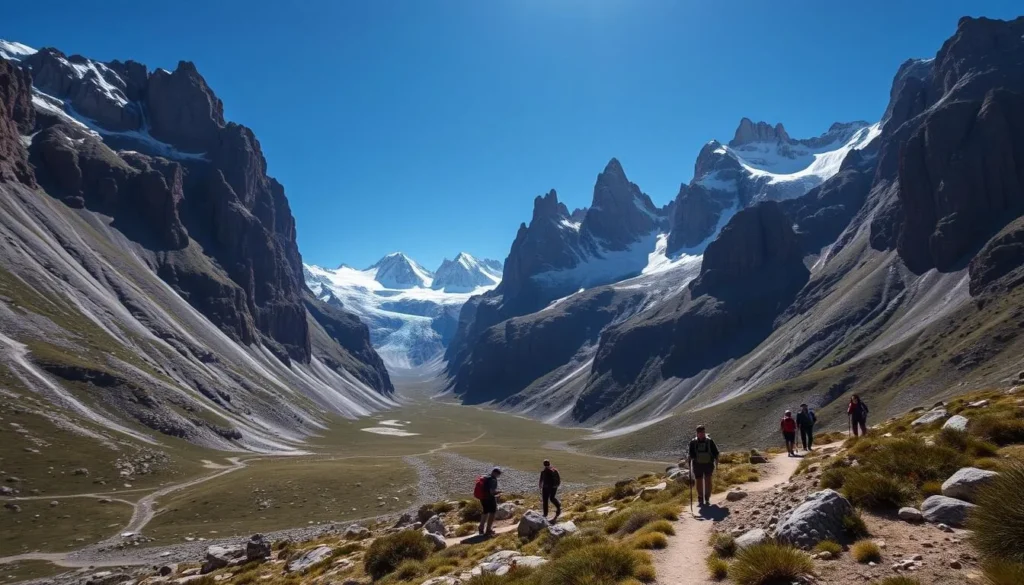
Hikers in the dramatic French Valley (Valle Francés) section of the W Trek
The W Trek
The park’s most famous trail, shaped like a W and covering 80km over 4-5 days. It hits all the major highlights: Las Torres, French Valley, and Grey Glacier. Can be hiked staying in refugios or camping.
Difficulty: Moderate to challenging
The O Circuit
A complete loop around the Paine Massif, incorporating the W Trek plus the less-visited backside of the range. Covers 110km over 7-9 days and offers more solitude and wilderness experience.
Difficulty: Challenging
Day Hikes
Numerous shorter options for those with limited time or hiking experience. Popular day hikes include Base Torres (18km round-trip), Mirador Cuernos (6km), and Salto Grande (2km).
Difficulty: Easy to moderate
Trekking Tip: Reservations for camping and refugios along the W and O Circuits are mandatory and should be made months in advance for the high season. The reservation system can be complicated, so consider booking through a tour operator if you’re finding it challenging.
Wildlife Watching
Torres del Paine hosts remarkable wildlife in its diverse ecosystems:
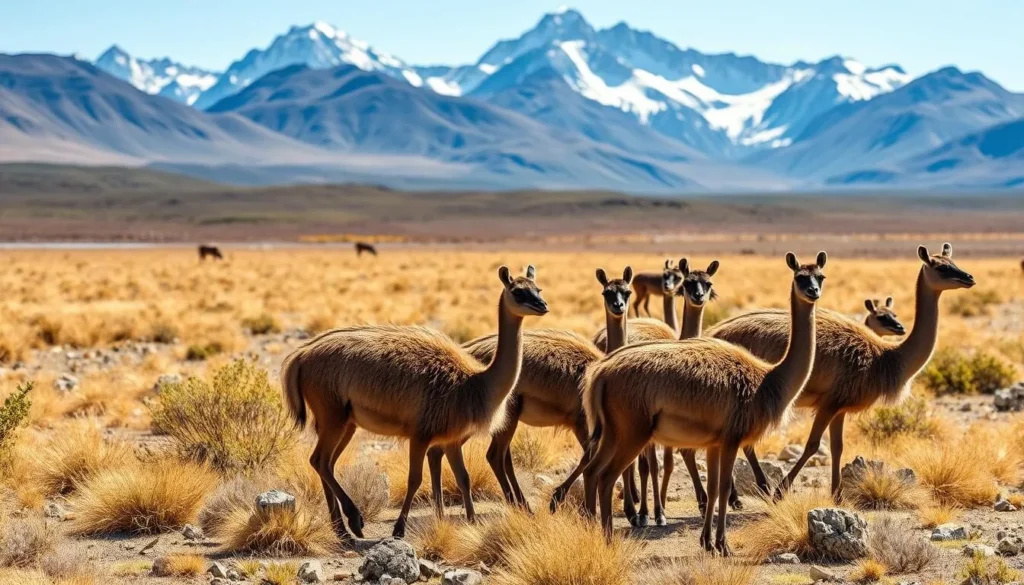
Guanacos are commonly seen throughout the park’s open grasslands
- Guanacos – Wild relatives of llamas, commonly seen in large herds throughout the park
- Pumas – The park has one of the highest densities of pumas in the wild, though they remain elusive
- Andean Condors – These massive birds with 3-meter wingspans soar above the mountains
- Huemul – Endangered Andean deer occasionally spotted in forested areas
- Foxes – Both grey and culpeo foxes inhabit the park
- Flamingos – Often seen in the park’s lagoons, especially Laguna Amarga
Track Patagonian Wildlife
Join specialized wildlife tours for the best chance to spot pumas and other elusive species.
Water Activities
The park’s glacial lakes and rivers offer several exciting water-based activities:
Kayaking
Paddle among icebergs on Grey Lake or explore the calmer waters of Lake Pehoé. Guided excursions are available for all skill levels.
Boat Tours
Catamaran crossings of Lake Pehoé offer spectacular views, while specialized boat tours approach the face of Grey Glacier for an up-close encounter with the ice.
Horseback Riding
Experience the park like the traditional Patagonian gauchos (cowboys) on horseback tours ranging from a few hours to full-day excursions. Several estancias and hotels offer riding programs suitable for beginners to experienced riders.
Ice Hiking & Climbing
For adventure seekers, guided ice hiking on Grey Glacier provides a unique opportunity to explore the glacier’s surface, ice caves, and crevasses with specialized equipment and expert guides.
Safety, Etiquette & Local Customs
Torres del Paine’s remote location and extreme weather conditions require visitors to be well-prepared and respectful of both nature and local customs.
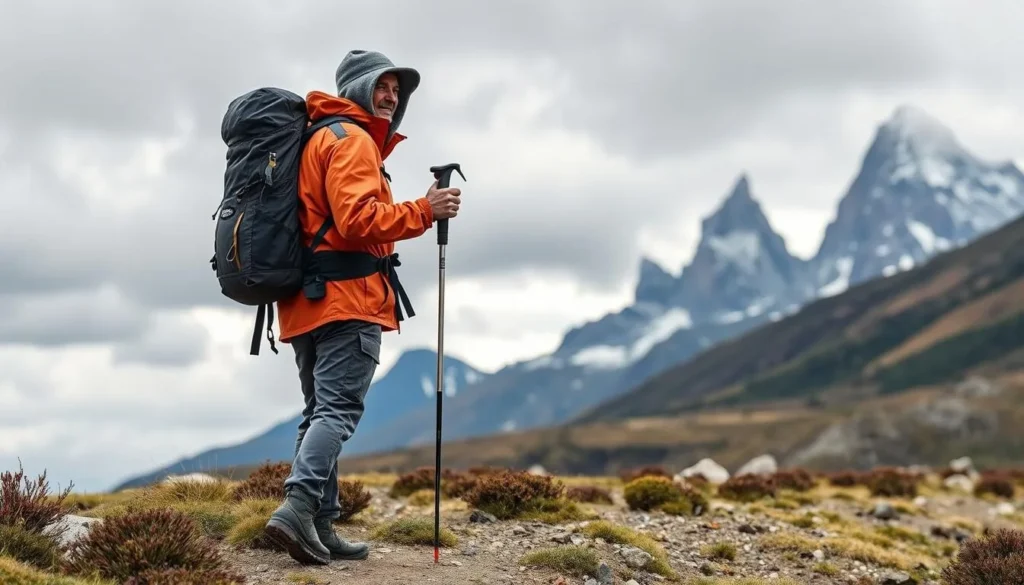
Proper equipment and preparation are essential for safety in Patagonia’s changeable conditions
Safety Considerations
Weather Preparedness
Patagonian weather can change rapidly. Always carry layers, waterproof clothing, sun protection, and extra food/water even on short hikes. Check weather forecasts but be prepared for unexpected conditions.
Trail Safety
Stay on marked trails, register your trekking plans with park authorities, and never hike alone in remote areas. Carry a basic first aid kit and know emergency procedures. During winter (June-August), a certified guide is required for all hikes.
Wildlife Safety
Maintain a safe distance from all wildlife. While pumas rarely approach humans, never approach or feed any animals. Store food properly when camping to avoid attracting foxes and other wildlife.
Fire Safety: Torres del Paine has suffered devastating wildfires in the past caused by careless visitors. Open fires are strictly prohibited throughout the park. Use only designated cooking areas at campgrounds and never leave stoves unattended.
Local Etiquette
- Leave No Trace – Pack out all trash, stay on designated trails, and leave natural objects where you find them
- Respect Quiet Hours – Observe quiet hours at refugios and campgrounds (typically 10pm-7am)
- Photography Etiquette – Ask permission before photographing local people, especially indigenous Patagonians
- Mate Customs – If offered mate tea, it’s customary to drink it all before returning the cup to your host
Cultural Awareness
The Magallanes region has a unique cultural identity shaped by indigenous peoples, European settlers, and the challenging Patagonian environment. Learning about local history and customs enhances your experience:
Indigenous Heritage
The area was traditionally home to several indigenous groups, including the Kawésqar and Aonikenk. Their history and culture are preserved in museums in Puerto Natales and Punta Arenas.
Gaucho Culture
The traditions of Patagonian gauchos (cowboys) remain an important part of local identity. Estancias (ranches) often showcase traditional skills like horseback riding and sheep shearing.
Practical Travel Tips
These essential tips will help you make the most of your Torres del Paine adventure while avoiding common pitfalls.
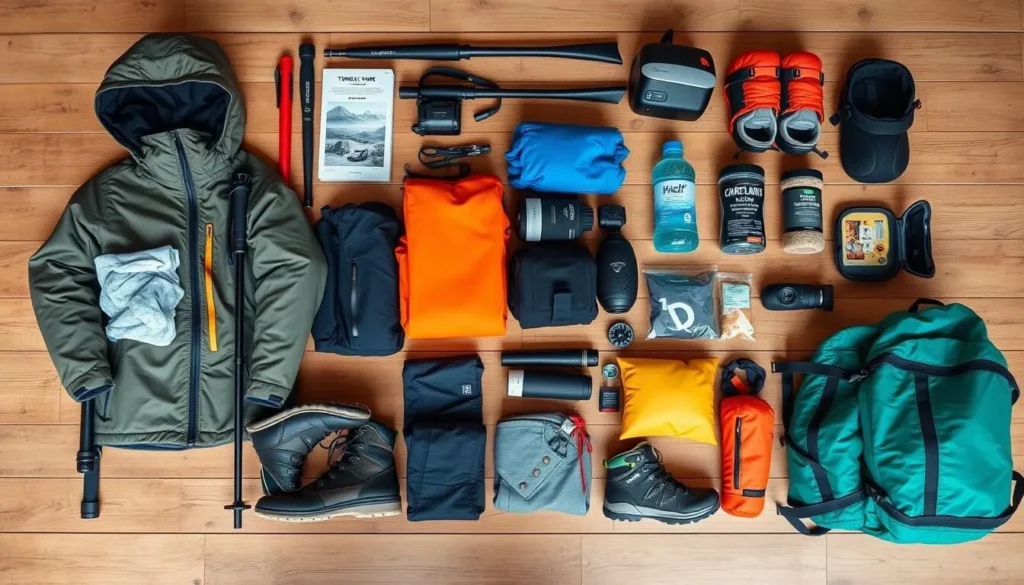
Proper gear preparation is essential for a successful Torres del Paine adventure
What to Pack
Patagonia’s changeable weather demands thoughtful packing. Essential items include:
Clothing
- Waterproof jacket and pants
- Quick-dry hiking clothes (avoid cotton)
- Thermal base layers
- Warm mid-layers (fleece/down)
- Sturdy waterproof hiking boots (broken in)
- Warm hat, gloves, and buff/neck gaiter
- Sun hat and sunglasses
Equipment
- Backpack with rain cover
- Trekking poles (highly recommended)
- Headlamp with extra batteries
- Water bottles/hydration system (2-3 liters)
- High SPF sunscreen
- First aid kit
- Power bank (limited charging options)
Packing Tip: For multi-day treks, prioritize lightweight, quick-drying items that can be layered. Even in summer, temperatures can drop significantly at night, so always pack warm layers.
Connectivity & Services
Torres del Paine is remote, with limited services and connectivity:
- Internet/Phone – Cell coverage is extremely limited within the park. Download maps, reservations, and essential information before arriving
- ATMs/Banking – No ATMs in the park; bring sufficient cash from Puerto Natales
- Medical Services – Basic first aid is available at larger hotels and ranger stations, but serious medical issues require evacuation to Puerto Natales or Punta Arenas
Reservations & Permits
Planning ahead is crucial for a smooth Torres del Paine experience:
Park Entrance
All visitors must purchase entrance tickets in advance through the official CONAF website. Print your ticket or save the QR code to your phone before arriving, as internet access is limited at park entrances.
Trekking Reservations
For the W Trek and O Circuit, you must book all camping sites or refugios in advance. These can be reserved through three separate organizations: CONAF, Vertice Patagonia, and Las Torres, depending on the location.
Hotel Bookings
Hotels within the park often require minimum stays (typically 2-3 nights) and book out months in advance during high season. Many offer all-inclusive packages with activities and meals.
Money-Saving Tips
While Torres del Paine isn’t a budget destination, these strategies can help manage costs:
- Visit during shoulder season (October-November or March-April) for lower prices
- Stay in Puerto Natales and take day trips to the park
- Camp instead of staying in refugios or hotels
- Prepare your own food rather than dining at restaurants
- Share rental car costs with other travelers
- Book flights well in advance for better rates
Ready for Your Torres del Paine Adventure?
Start planning your dream trip to one of the world’s most spectacular wilderness areas.
Conclusion
Torres del Paine National Park represents nature at its most dramatic and awe-inspiring. From the iconic granite towers to the sprawling glaciers, turquoise lakes, and abundant wildlife, this Patagonian paradise offers experiences that will remain etched in your memory long after you’ve returned home.
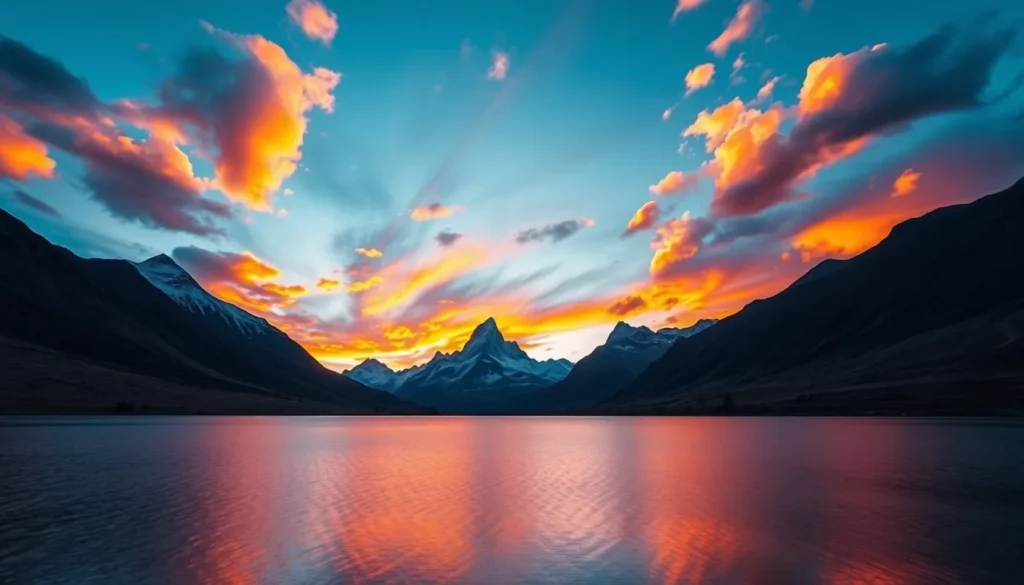
The magical light of sunset transforms Torres del Paine into a landscape of dreams
While planning a trip to this remote corner of Chile requires effort and preparation, the rewards are immeasurable. Whether you’re challenging yourself on the legendary W Trek, photographing guanacos against a backdrop of towering peaks, or simply absorbing the profound silence of this pristine wilderness, Torres del Paine offers transformative experiences for every type of traveler.
Ready to witness glaciers that glow like blue fire and mountains that seem to pierce the sky? Your Patagonian adventure begins now!
The above is subject to change.
Check back often to TRAVEL.COM for the latest travel tips and deals.
